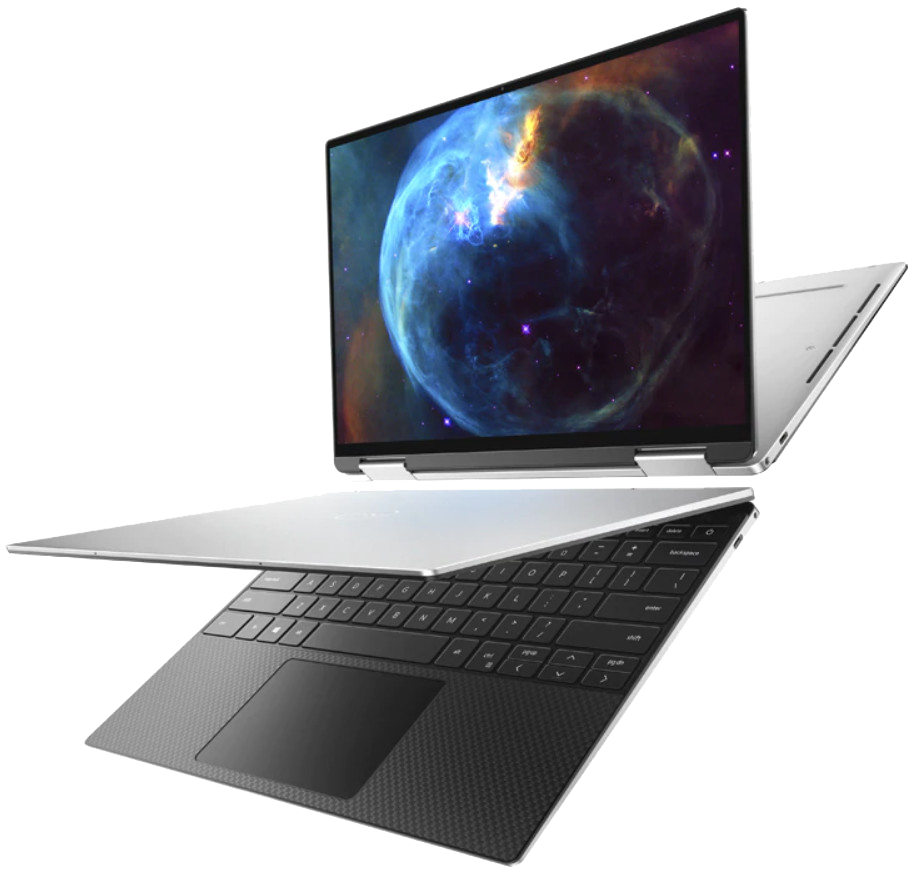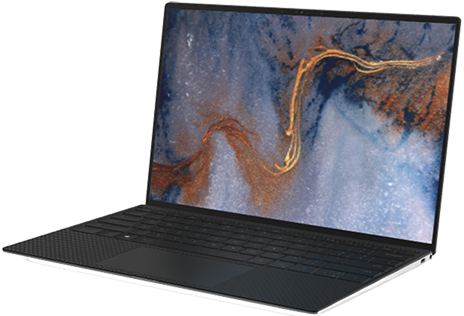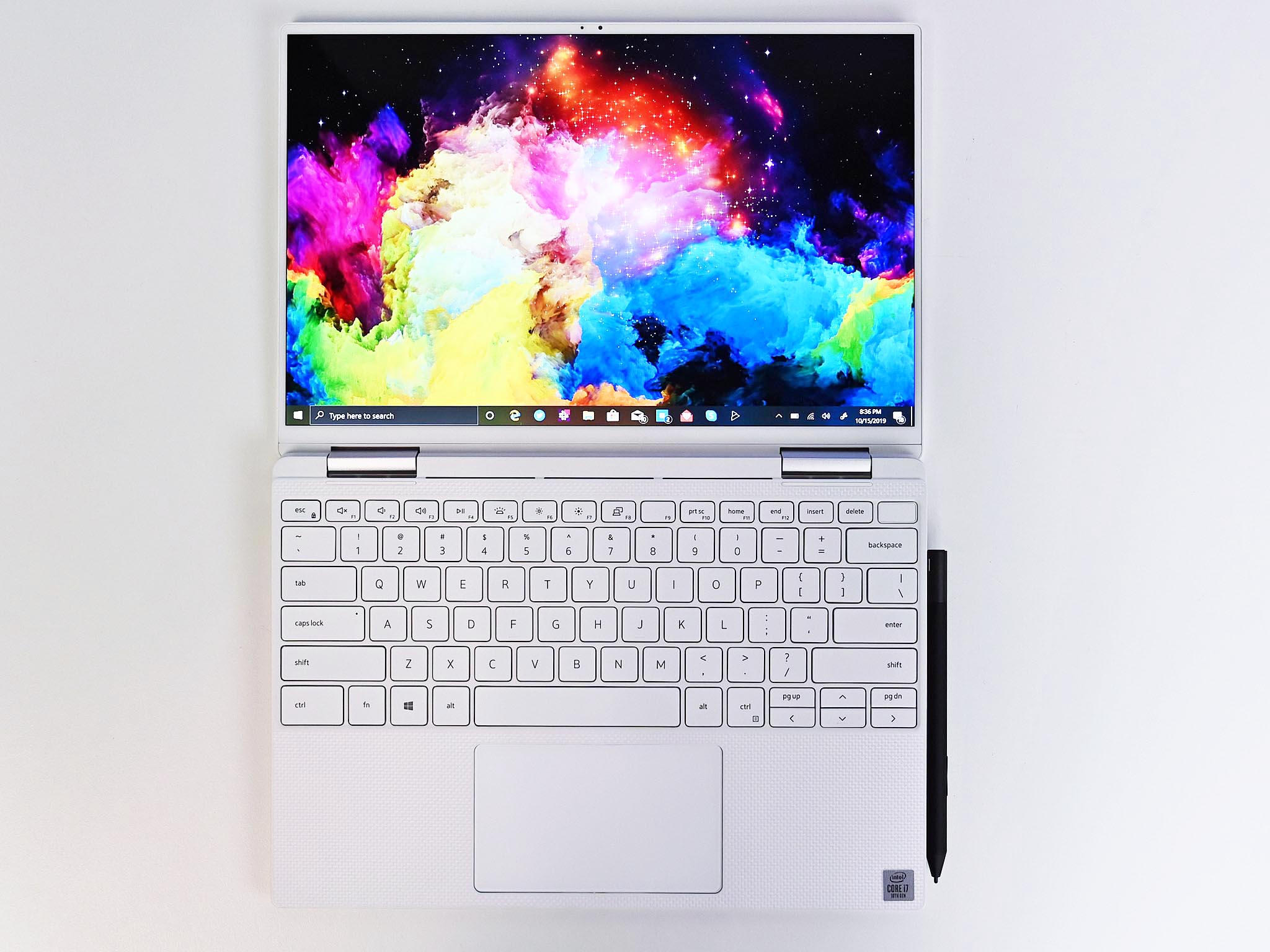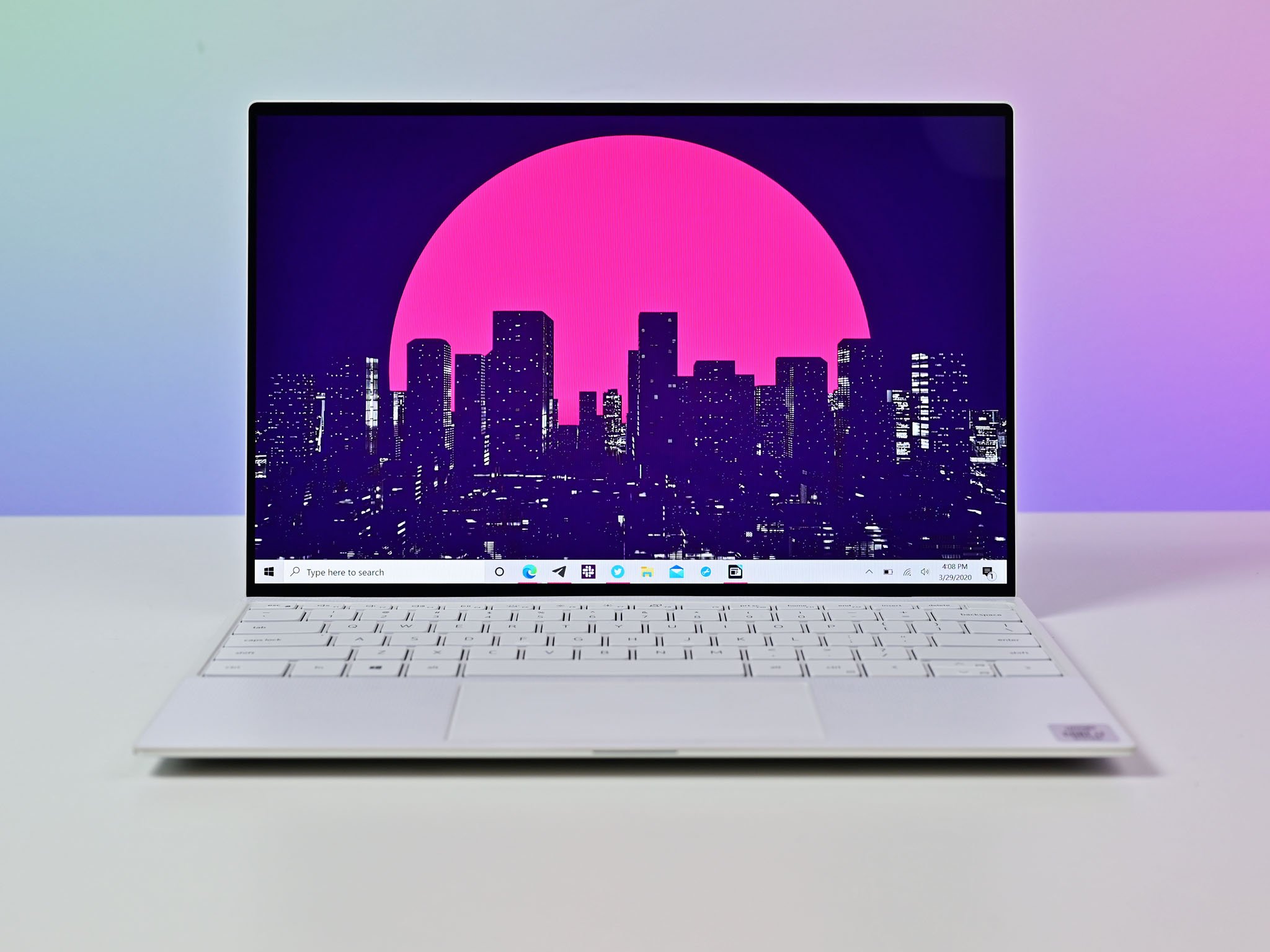Versatile Convertible
Dell XPS 13 2-in-1 (7390)
Pros
- 10th Gen Intel "Ice Lake" CPUs
- 16:10 4K touch display
- Dual Thunderbolt 3 and Wi-Fi 6
- Thin and light premium build
- Supports active pen for inking
Cons
- RAM and SSD not upgradeable
Dell's XPS 13 2-in-1 offers more versatility thanks to a convertible design, and it's packing Intel's 10nm 10th Gen Core processors (CPU) and improved thermals for an excellent performance. It might not have user-upgradeable hardware, but for many people, it will be the go-to pick — especially if you need active pen support.
Stunning Ultrabook
Dell XPS 13 (9300)
Pros
- 10th Gen Intel "Ice Lake" CPUs
- 16:10 4K touch display
- Premium build that's thin and light
- Upgradeable SSD
- IR camera and fingerprint reader
Cons
- Pricier introductory model
- No inking support
The standard XPS 13 is a proven Ultrabook that's seen as a redesign for the 9300 models. It's not as versatile as the convertible version and doesn't offer the same inking experience, but it's still a top pick for those who prefer a standard notebook.
These two laptops are close siblings, and you're going to get a slim, premium PC in either case. They both take a spot in our collection of the overall best Windows laptops available now. However, there are some significant differences when it comes to internal hardware and overall design. Let's take a close look at the tech specs available on each laptop to get a better idea of how these laptops differ.
Dell XPS 13 2-in-1 vs. XPS 13 tech specs
| Dell XPS 13 2-in-1 (7390) | Dell XPS 13 (9300) | |
|---|---|---|
| Processor | 10th Gen Intel Core i3-1005G1 Intel Core i5-1035G1 Intel Core i7-1065G7 |
10th Gen Intel Core i3-1005G1 Intel Core i5-1035G1 Intel Core i7-1065G7 |
| RAM | 4GB, 8GB, 16GB, 32GB LPDDR4x-3733MHz |
8GB, 16GB LPDDR4x-3733MHz |
| Storage | 256GB, 512GB, 1TB PCIe SSD |
256GB, 512GB, 1TB, 2TB PCIe SSD |
| Display size | 13.4 inches | 13.4 inches |
| Display resolution | 1920x1200 (touch) 3840x2400 (touch) |
1920x1200 (touch and non-touch) 3840x2400 (touch) |
| Aspect ratio | 16:10 | 16:10 |
| Graphics | Intel UHD Graphics (i3, i5) Intel Iris Plus Graphics (i7) |
Intel UHD Graphics (i3, i5) Intel Iris Plus Graphics (i7) |
| Ports | Two Thunderbolt 3 microSD card reader 3.5mm audio |
Two Thunderbolt 3 microSD card reader 3.5mm audio |
| Biometrics | Fingerprint reader | Fingerprint reader IR camera |
| Connectivity | Killer Wi-Fi 6 AX1650 Bluetooth 5.0 |
Killer Wi-Fi 6 AX1650 Bluetooth 5.0 |
| Battery | 51Wh | 52Wh |
| Dimensions | 11.67 x 8.15 x 0.27 - 0.51 inches ( 296mm x 207mm x 7 - 13mm) |
11.6 x 0.58 inches (296mm x 199mm x 7.8 - 14.8mm) |
| Weight | From 2.9 pounds (1.32kg) | From 2.65 pounds (1.2kg) |
Design and features
Both the XPS 13 9300 and its convertible counterpart are among the sleekest looking Ultrabooks out there. The standard XPS 13 comes in a platinum silver or frost white external finish and a black carbon fiber or alpine white interior, while the 2-in-1 has the silver exterior finish option and black or white interior options.
The XPS 13 2-in-1 is a bit heavier but is a bit thinner than the standard XPS 13 (convertible laptops generally have a bit more bulk due to the touch display and hinge design), though both weigh less than three pounds. In both cases, you're going to get a compact 13-inch laptop that can easily be carried around with you wherever you go.
Both the XPS 13 and its convertible counterpart are among the sleekest looking Ultrabooks out there.
For ports, both the regular XPS 13 and 2-in-1 have been trimmed down to just two Thunderbolt 3, a microSD card reader, and a 3.5mm audio jack. With either laptop, you'll be able to take advantage of a quality Thunderbolt 3 docking station for a full workstation experience.
If you prefer a laptop that can be used in tent, stand, and tablet modes alongside the standard notebook orientation, you'll have to go with the XPS 13 2-in-1. The XPS 13 is stuck as a notebook, without the ability to rotate past 180 degrees. This ultimately makes the XPS 13 2-in-1 a better pick for those who often watch TV and movies, especially when you get into the 4K display option.
Both XPS 13 and 2-in-1 models have a keyboard that stretches to the edges of the chassis, along with a sizable Precision touchpad. Both are comfortable to type on, and the final decision will no doubt come down to personal preference. If you want the most key travel possible, the standard XPS 13 should edge out the 2-in-1 model.
Killer AX1650 Wi-Fi 6 connectivity is included in both laptops for incredibly fast wireless speeds. Whereas the XPS 13 2-in-1 has a fingerprint reader built into the power button for some extra security, the XPS 13 has both an IR camera and fingerprint reader.
Display
Dell's move to a 16:10 aspect ratio in the XPS 13 2-in-1 was applauded, and it has now made the same change to the XPS 13 9300. It's a boxier display with more surface area than the older 16:9 option, and the chin below the display has been removed to make room for the extra screen. Bezel is thin on both laptops for a truly stunning look.
The XPS 13 2-in-1 comes in 1920x1200 (FHD+) and 3840x2400 (UHD+) resolutions. All are touch-enabled and are compatible with Dell's Premium Active Pen for a stellar inking experience. You also get Dolby Vision HDR400 support in both displays.
The XPS 13 9300 is available in the same FHD+ and UHD+ resolutions, albeit with touch and non-touch options for FHD+. They all hit around 500 nits brightness and bring near-perfect color reproduction across sRGB and DCI-P3 color gamuts. Also included is Dolby Vision HDR400 support. Note that the non-touch display has a raised plastic bezel, while the touch options have edge-to-edge glass.
If you have some creative ambitions, you'll want to opt for the XPS 13 2-in-1 with its inking support, while if you'd rather go with a non-touch display to optimize battery life, you will be no doubt leaning toward the XPS 13's non-touch FHD option.
Performance and price
Both XPS models use Intel's 10th Gen "Ice Lake" CPUs for excellent performance. The Core i7 models include Intel Iris Plus Graphics for a solid boost to power when gaming or editing, but neither laptop has a dedicated GPU. The XPS 13 2-in-1 has a rather low-end option available with Core i3 CPU, 4GB of RAM, and 256GB SSD, starting at about $882. There's also an XPS 13 9300 model with Core i3 CPU, 8GB of RAM, and 256GB SSD for about $980. That's $100 more, and it doesn't include a touch display.
A mid-range XPS 13 9300 with Core i5 CPU, 8GB of RAM, non-touch display, and a 256GB SSD goes for about $1,029. An XPS 13 2-in-1 with the same Core i5 CPU, 8GB of RAM, and 256GB SSD costs about $1,157, but that's with a touch display.
The SSD in the XPS 13 2-in-1 is configurable up to 1TB, and it's not user-replaceable. The XPS 13 9300 is more accommodating, with up to a 2TB size straight from Dell and the ability to upgrade it after purchase. Neither laptop offers upgradeable RAM.
Battery size is almost the same (51Wh compared to 52Wh), and life will depend on the display type and internal hardware. In any case, you should expect a full eight hours of life from the FHD+ models, dipping slightly for the UHD+ models.
The XPS 13 2-in-1 is the more versatile choice
Thanks to the performance from 10th Gen Intel Core CPUs, a 16:10 aspect ratio for its FHD+ and UHD+ touch displays, and the added versatility of a rotating display and active pen support, the XPS 13 2-in-1 is going to appeal to a lot of people.
Redesigned XPS Convertible
Dell XPS 13 2-in-1 (7390)
A beautiful convertible with 10th Gen Intel hardware
Dell's XPS 13 2-in-1 has been improved in nearly every way, and anyone who's in the market for a convertible should take notice.
The XPS 13 is the right choice for a standard notebook
If you don't need the added versatility of a convertible, the XPS 13 should be your first pick. Models with similar hardware are less expensive, there's an IR camera for Windows Hello, and its SSD can be upgraded after purchase.
Premium Standard Notebook
Dell XPS 13 (9300)
An outstanding Ultrabook for those who don't need a convertible
The XPS 13 is a non-convertible alternative to the XPS 13 2-in-1. It offers strong performance in its own right and has up to a 4K touch display option available, all wrapped up in a premium, light chassis. It's also not going to cost quite as much as the 2-in-1 for higher-end models.









0 comments:
Post a Comment